|
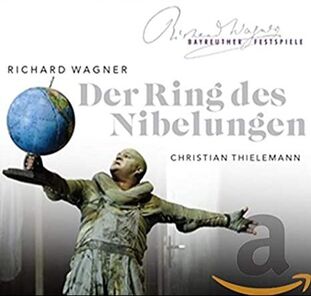 Richard Wagner: Der Ring des Nibelungen Click here to watch The musical event of the online Opera Season is Richard Wagner's monumental "Ring" under the baton of Christian Thielemann, in a daring staging by Dmitri Tcherniakov, available in full on Arte Concert. This cycle of four operas - Rheingold, Walkure, Siegfried and Gottedammerung - inspired by Nordic and Germanic mythology - was recorded at the Staatsoper Unter den Linden in Berlin with the prestigious Staatskapelle orchestra and internationally renowned singers. This programme isn’t available everywhere. Arte doesn’t provide a list of countries where individual programmes are available although they try to negotiate the rights to all of these programmes in order to offer them to users outside of France and Germany. Depending on where you are in the world, I’m afraid you’ll have to click on it and see. If Arte does not hold the international rights to the video that you would like to watch, the following message will appear: “This video is not available in your country”. Sorry, but definitely worth a try. 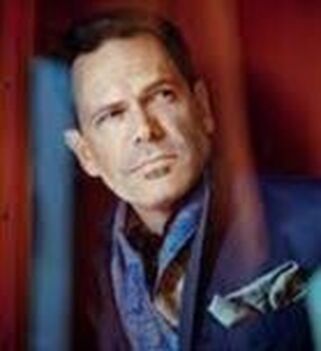 Kurt Elling and Danilo Perez- Birdland Click here for tickets Birdland Jazz Club continues its smashing series of livestreams this coming Wednesday with a rare appearance by Kurt Elling and Danilo Perez. Renowned for his singular combination of robust swing and poetic insight, two-time Grammy winner Kurt Elling has secured his place among the world’s foremost jazz vocalists. The New York Times proclaimed Elling, “the standout male vocalist of our time”. Danilo Pérez is a Panamanian pianist whose music is a blend of Panamanian roots with elements of Latin American folk music, jazz, European impressionism, African, and other musical heritages that promote music as a multi-dimensional bridge between people. His career has included appearances with Dizzy Gillespie and Wayne Shorter. Wednesday, November 30, 2022 9:30 PM ET 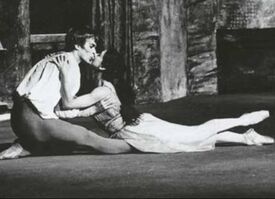 Romeo & Juliet - Royal Ballet Click here to watch This year marks the 50th anniversary of the premiere of Kenneth MacMillan’s Romeo and Juliet for the Royal Ballet. In this enchanting short film, less than five minutes, Sarah Lamb, Steven McRae, Deborah MacMillan and Kevin O'Hare explore MacMillan’s stunning choreography for Romeo and Juliet’s first pas de deux. His poignant setting of Sergey Prokofiev’s classic score draws out the emotional and psychological intensity of the tale. The ballet of Romeo and Juliet contains three passionate pas de deux: the lovers’ first meeting, the famous balcony scene and the devastating final tragedy, in which Romeo dances desperately with the lifeless Juliet. The story is set against a wonderful evocation of 16th-century Verona, and includes a bustling marketplace that erupts into a violent sword fight, and a lavish ball held in an elegant mansion. MacMillan’s Romeo and Juliet first arrived at Covent Garden in 1965. Rudolf Nureyev and Margot Fonteyn took the title roles on the opening night – MacMillan had originally created the work on Lynn Seymour and Christopher Gable but Fonteyn and Nureyev were by far the bigger stars. Their performance had a rapturous reception, with 43 curtain calls and almost forty minutes of applause. The ballet has been at the heart of the Company’s repertory ever since, amassing more than four hundred performances. The full ballet is available via the Royal Ballet’s new streaming service (https://www.roh.org.uk/stream/offer. 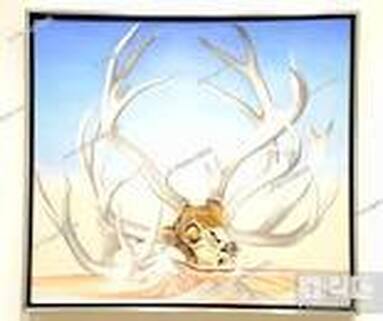 Georgia O’Keefe – Met Museum Click here to listen Patricia Marroquin Norby and Matthew Martinez, two Indigenous Native American scholars, discuss Georgia O’Keeffe’s painting, From the Faraway, Nearby (1937) in the light of what, and who, the artist omits in her depiction of New Mexico. O’Keeffe’s painting offers a romanticized ideal of the American Southwest that is vast and empty, ignoring local Indigenous communities and claiming the region as her own. At the center of the canvas the skull of a mule deer levitates above an abstracted version of a desert landscape. During this time, the artist was famous for collecting and painting animal bones, which she had referred to on multiple occasions as boney “trash.” This skull features an additional set of antlers, bringing the animal into the realm of the imaginary. She omits the painting’s middle ground and flattens the picture plane which further elevates the surreal quality of the work. 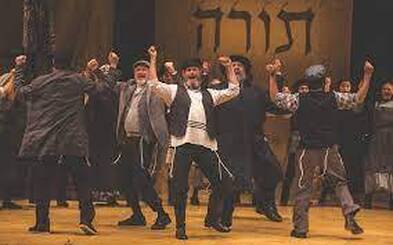 Fiddler in Yiddish Click here to watch This week in New York, the wildly successful revival of Fiddler on the Roof reopens for its third run. One of the greatest and most resonant of American musicals, Fiddler was written in English by Sheldon Harnick (lyrics), Jerry Bock (music) and Joseph Stein (book). This revival is performed in Yiddish, a language spoken today by a small contingent of Orthodox Jews but once the lingua franca of most of the Jewish world, mainly in the Pale of Settlement. The Pale was a vast area of the Tsarist Russian empire which included Belarus, Lithuania and Moldova, much of Ukraine, Latvia and Poland. Jews were only allowed to live within the Pale and forbidden to reside, even temporarily, beyond it. The story of Fiddler, like the story of the Jews, is circular, and by the end of the show, Tevye the Milkman hitches his lame horse to his cart and lugs his family’s belongings around the stage, on his way out of the district. They trudge in a circle, mirroring the movements of the show's jubilant beginning but upended by the constants of Jewish life - disruption and reinvention. A Tsarist edict has expelled the whole community from Anatevka, their village, their shtetl, the only place they know. This soaring production, brimming with life and fresh as on the first opening night, wrestles with two dueling traditions: the broad appeal of the original show and the specificity of an ethno-language that was once universal among Eastern European Jews, but is now spoken by fewer than a million people. The show’s signature song, ’Tradition’, spells out the key to Jewish life and survival. When 'Tradition' becomes 'Traditsye,' in this production, we can see it demonstrated in even subtler ways. Here is ‘Tradition’ or ‘Traditsye’ from rehearsal footage for the current off-Broadway revival. Steven Skybell as Tevye. This is to me somehow even more poignant when performed, as here, in the cast’s contemporary street clothes, particularly when, just looking at them, it is clear that many of the cast are not Jewish but have learned Yiddish especially to appear in this production. Directed by Oscar and Tony winner Joel Grey Fiddler on the Roof in Yiddish, stars Steven Skybell, who recreates his award-winning performance as Tevye, a milkman navigating family, faith, and changing traditions in the little Russian shtetl of Anatevka. If you’re in New York or planning on a trip there, this is an unmissable theatrical event but hurry, it’s running only until Jan 1. If you want to know what they’re singing about, here are the lyrics in English, the language in which they were written by Sheldon Harnick.
"Tradition" (Tevye) "A fiddler on the roof. Sounds crazy, no? But in our little village of Anatevka, you might say every one of us is a fiddler on the roof, trying to scratch out a pleasant, Simple tune without breaking his neck. It isn't easy. You may ask, why do we stay up there if it's so dangerous? We stay because Anatevka is our home... And how do we keep our balance? That I can tell you in one word... Tradition." (Chorus) Tradition, tradition... tradition (Tevye) "Because of our traditions, We've kept our balance for many, many years. Here in Anatevka we have traditions for everything... how to eat, how to sleep, even, how to wear clothes. For instance, we always keep our heads covered and always wear a little prayer shawl... This shows our constant devotion to God. You may ask, how did this tradition start? I'll tell you - I don't know. But it's a tradition... Because of our traditions, Everyone knows who he is and what God expects him to do." (Tevye & Papas) Who day and night Must scramble for a living Feed the wife and children Say his daily prayers And who has the right As master of the house To have the final word at home? (All) The papa, the papas... tradition (Golde & Mamas) Who must know the way to make a proper home? A quiet home, a kosher home Who must raise a family and run the home So papa's free to read the holy book? (All) The mama, the mama... tradition (Sons) At three I started Hebrew school At ten I learned a trade I hear they picked a bride for me I hope... she's pretty (All) The sons, the sons... tradition (Daughters) And who does mama teach To mend and tend and fix Preparing me to marry Whoever papa picks? (All) The daughters, the daughters... tradition (Tevye) "And in the circle of our little village, We have always had our special types. For instance, Yente, the matchmaker..." "And Nahum, the beggar..." And most important, our beloved Rabbi..." "And among ourselves, we get along perfectly well. Of course, there was the time when he sold him a horse, but delivered a mule, but that's all settled now. Now we live in simple peace and harmony and..." (All) Tradition, tradition... tradition Tradition, tradition... tradition (Tevye) "Tradition. Without our traditions, Our lives would be as shaky as... as a fiddler on the roof!"
0 Comments
|
AuthorRuth Leon is a writer and critic specialising in music and theatre. Archives
March 2024
Categories
All
|
 RSS Feed
RSS Feed
